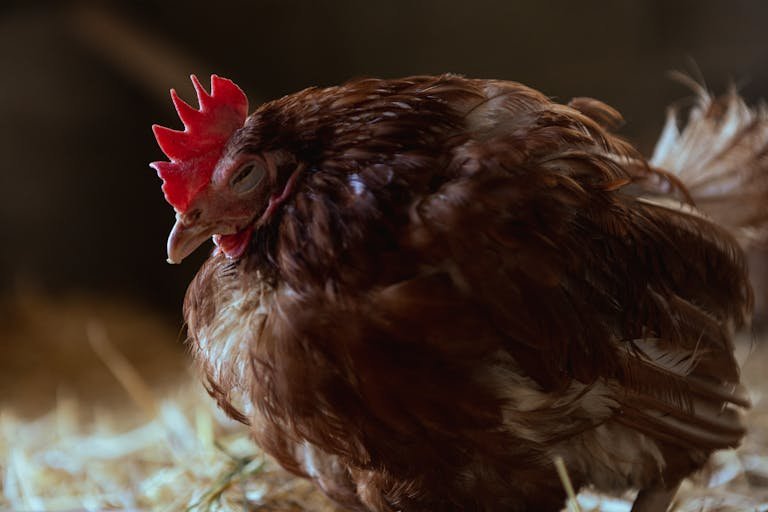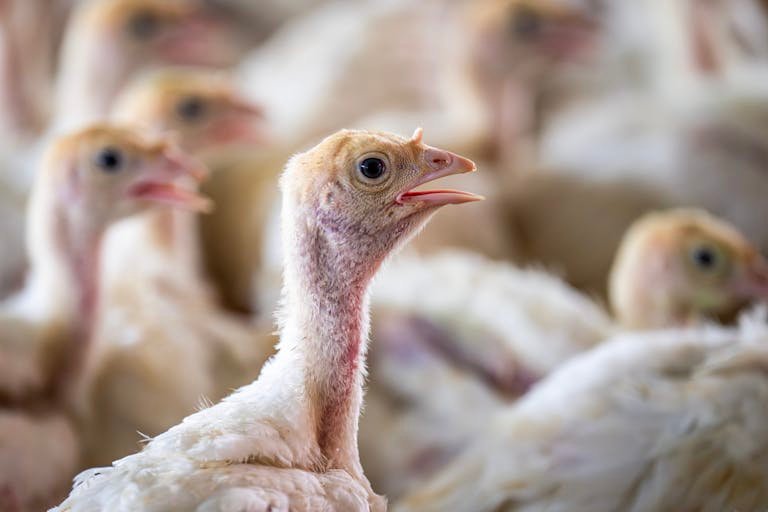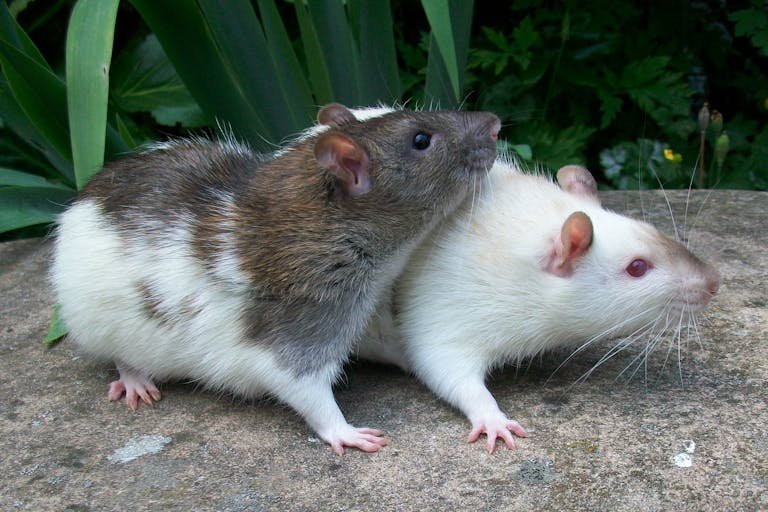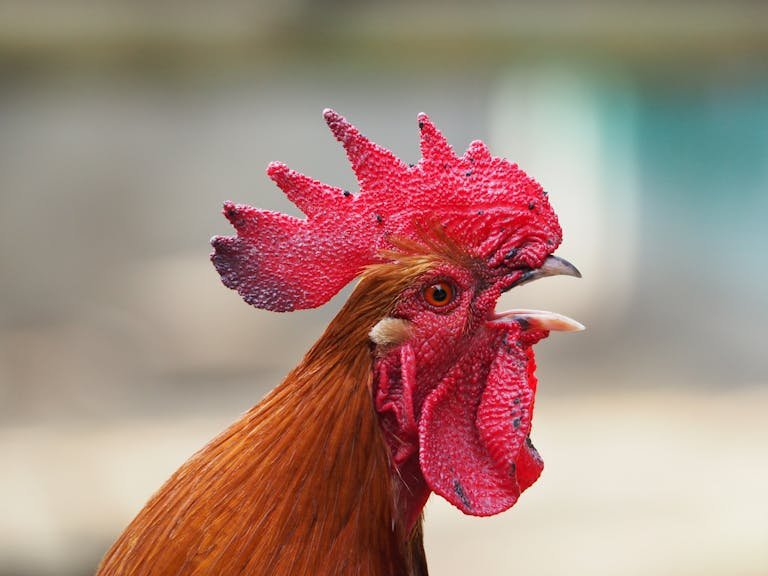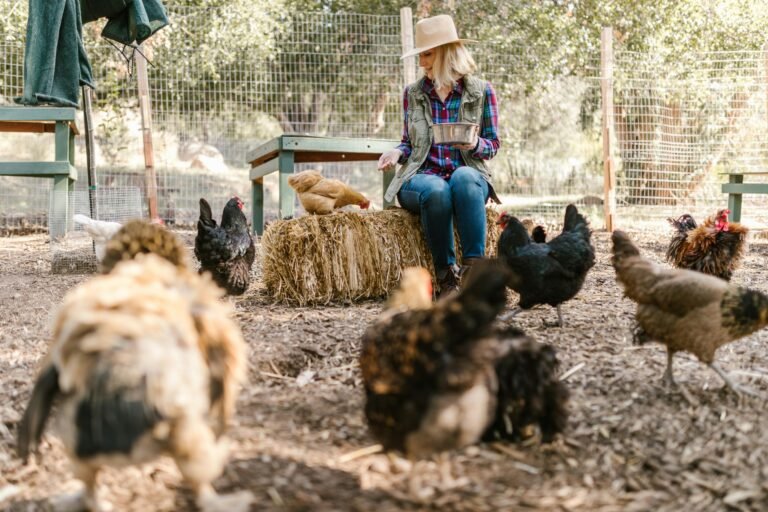Why Chickens Have Wings: The Surprising Truth

Chickens, with their distinctive clucking and grounded lifestyle, might not seem like natural candidates for wings. However, while they may not be high-flying creatures like eagles or falcons, their wings serve a variety of essential purposes that are crucial to their survival and daily life. Wings are more than just decorative appendages or vestigial remnants from their wild ancestors—they play an active role in helping chickens escape danger, maintain balance, regulate body temperature, and much more.
In this detailed blog, I will explore the many reasons Why Chickens Have Wings, breaking down how they use them to survive and thrive in their environments.
Escaping Predators
One of the most important reasons why chickens have wings is to escape predators. While chickens aren’t known for their ability to fly long distances, their wings offer a quick escape mechanism when danger is near. Chickens are prey animals, and many predators such as foxes, raccoons, hawks, and even domestic dogs and cats are always on the lookout for an easy meal. In these situations, a chicken’s wings come in handy.

How Wings Help Chickens Escape Predators
Here’s how wings help chickens when predators are closing in:
- Quick Bursts of Flight: Chickens can use their wings to generate quick bursts of flight to escape a predator’s reach. They flap their wings vigorously to gain a bit of altitude and cover short distances to safer grounds. This allows them to make a sudden escape even though they aren’t capable of sustained flight.
- Increased Jump Height: Chickens can use their wings to jump higher, reaching a safe perch or an elevated place where predators can’t reach them. A predator on the ground won’t be able to catch them if they quickly flap their wings to get to the top of a fence or tree branch.
- Direction Change: Wings allow chickens to change direction quickly when being chased. A sudden flap of the wings can give them the momentum needed to make sharp turns and avoid being caught.
- Seeking Shelter: Chickens often use their wings to climb and fly into sheltered spaces, like coops or tree canopies, where predators may have difficulty following them.
In essence, a chicken’s wings act as a defense mechanism that gives them an extra chance of survival when predators are on the prowl.
Maintaining Balance
Another crucial function of a chicken’s wings is helping them maintain balance. Chickens are often found hopping and jumping from one spot to another, whether it’s from the ground to a perch or across uneven terrain. Wings help them maintain stability during these movements, ensuring they don’t topple over or fall.
How Wings Help Chickens Maintain Balance
Here are some key points about how wings assist in balancing:
- Steady Perching: Chickens use their wings to balance themselves when perching on high or narrow surfaces, such as fences or branches. By extending or adjusting their wings slightly, they keep themselves stable, preventing any falls.
- Smooth Landings: When jumping down from a high spot, wings act like a parachute, allowing chickens to glide and land softly instead of crashing to the ground.
- Mid-Air Correction: When chickens jump or hop, their wings help them correct their posture mid-air, so they land where they intend to. This is especially important for avoiding obstacles or hazards while moving from one place to another.
- Preventing Tumbles: Wings also play a part in helping chickens avoid falling over when moving quickly. If they lose their footing, a quick flap of the wings can restore their balance.
Chickens may not be acrobats, but their wings give them enough aerial assistance to maintain their balance as they move from one perch to the next.
Regulating Body Temperature
Another lesser-known function of chicken wings is regulating their body temperature. Chickens are sensitive to temperature extremes, and their wings provide an additional way to cool down during hot weather or stay warm when it’s cold.
How Wings Help Chickens Regulate Body Temperature
Here’s how wings are used by chickens to control their body temperature:
- Cooling Off: On a hot day, chickens will spread their wings to allow air to circulate around their bodies. By holding their wings slightly away from their sides, they create air pockets that help to cool them down.
- Staying Warm: During colder temperatures, chickens tuck their wings tightly against their bodies to conserve heat. By covering their bodies with their wings, they create a layer of insulation to keep themselves warm.
- Preventing Overheating: Chickens may flap their wings lightly to generate airflow around their bodies. This gentle movement helps them cool off without using too much energy, preventing them from overheating in the sun.
- Ventilation: Chickens use their wings to fan themselves when they need additional ventilation. This can be particularly helpful when they are sitting in a coop or an enclosed space that gets warm.
While humans rely on clothes or technology for temperature regulation, chickens use their wings as nature’s thermostat, keeping themselves comfortable in both hot and cold weather.
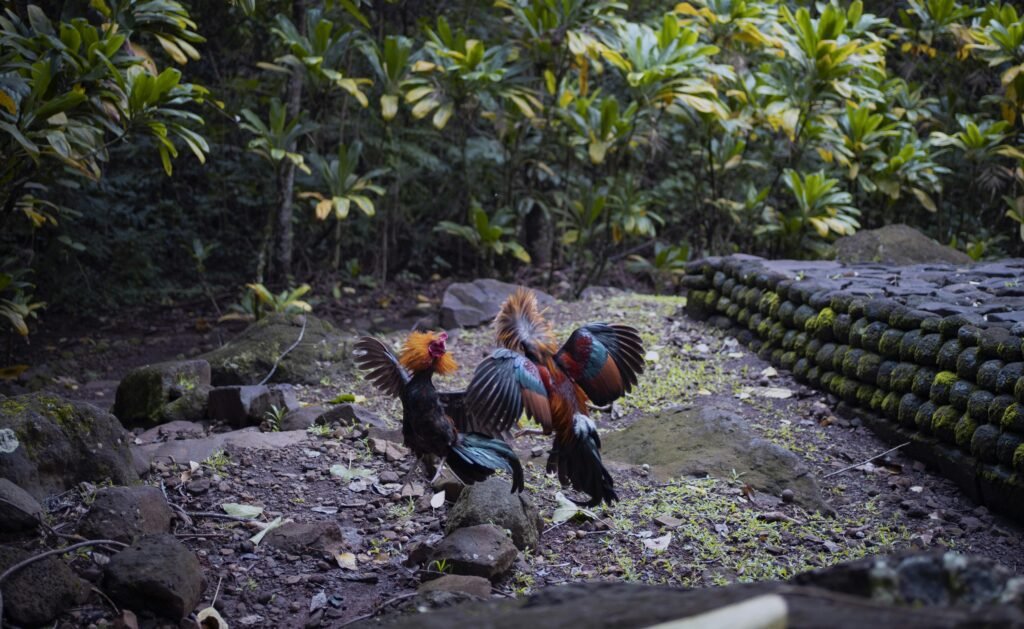
Courtship and Mating
Wings also play an important role in chicken courtship and mating behavior. Male chickens, known as roosters, use their wings to attract mates and demonstrate their strength to potential partners. Courtship displays often involve a rooster spreading his wings and puffing up his feathers to make himself appear larger and more impressive.
How Wings Help in Courtship and Mating
Here’s how wings are used in the courtship process:
- Wing-Spreading Displays: Roosters will spread their wings wide to show off their size and vigor to nearby hens. The larger and healthier a rooster appears, the more attractive he is to females.
- Wing Beats: Roosters may perform specific wing beats as part of a courtship dance. This rhythmic flapping of their wings serves as a signal to hens that the rooster is healthy and strong.
- Feather Display: The use of wings in mating displays also showcases the rooster’s feathers. Healthy, vibrant feathers indicate good genetics and health, which is appealing to hens looking for a mate.
- Intimidating Rivals: Roosters may spread their wings to intimidate other males during mating season. This action demonstrates dominance and helps a rooster establish his place in the flock’s hierarchy.
In the world of chickens, wings are more than tools for flight—they are also a means of communication and attraction during mating rituals.
Protecting Chicks
Mother hens, or broody hens, use their wings in a protective capacity, sheltering their chicks from both predators and harsh environmental conditions. A hen’s wings are a safe space where her chicks can hide and find warmth, food, and safety.
How Wings Help in Protecting Chicks
Here are ways mother hens use their wings to protect their young:
- Creating a Canopy: When a mother hen senses danger, she will quickly spread her wings, creating a protective canopy under which her chicks can hide. This keeps the young ones safe from predators or harsh weather.
- Shielding from Rain: If it begins to rain, hens will spread their wings wide to cover their chicks, acting as a living umbrella to keep them dry.
- Providing Warmth: Hens use their wings to keep their chicks warm, especially during the night or in cold conditions. By tucking them under their wings, hens ensure their chicks remain cozy and protected from the cold.
- Offering Comfort: Chickens feel safe and secure under their mother’s wings. Wings offer comfort and reassurance to chicks who are still developing and vulnerable to predators or environmental threats.
In these ways, wings serve as a symbol of protection and care for young chicks, ensuring they grow up healthy and safe.
Wings for Grooming
Aside from their primary survival purposes, wings are also vital for maintaining a chicken’s overall health. Chickens frequently preen their feathers, using their wings to help clean and arrange their plumage. This grooming behavior is essential for keeping their feathers in top condition.
How Wings Help in Grooming
- Preening Feathers: Chickens use their beaks and wings to carefully preen and align their feathers. Keeping their feathers clean helps them stay dry and insulated, which is crucial for temperature regulation.
- Removing Parasites: Wings allow chickens to reach difficult spots on their bodies where parasites might hide. A quick flap can dislodge pests such as mites, while careful grooming with their wings can help remove dirt and debris.
- Maintaining Feather Health: Proper grooming ensures that a chicken’s feathers remain healthy and in good condition. Well-groomed wings enable chickens to use their feathers for insulation, protection, and communication.
Read Also: Why Are My Chickens Dying? 4 Shocking Reasons
Final Words
Chickens may not be the most skilled flyers, but their wings play a crucial role in their day-to-day lives. From escaping predators and maintaining balance to regulating body temperature and caring for their young, wings are an essential part of a chicken’s survival toolkit. Whether used in mating displays or to shield chicks from danger, wings are much more than just appendages—they are an integral part of a chicken’s ability to survive and thrive.
So, the next time you see a chicken flap its wings, remember that those simple movements are a reflection of millions of years of evolution and adaptation.

